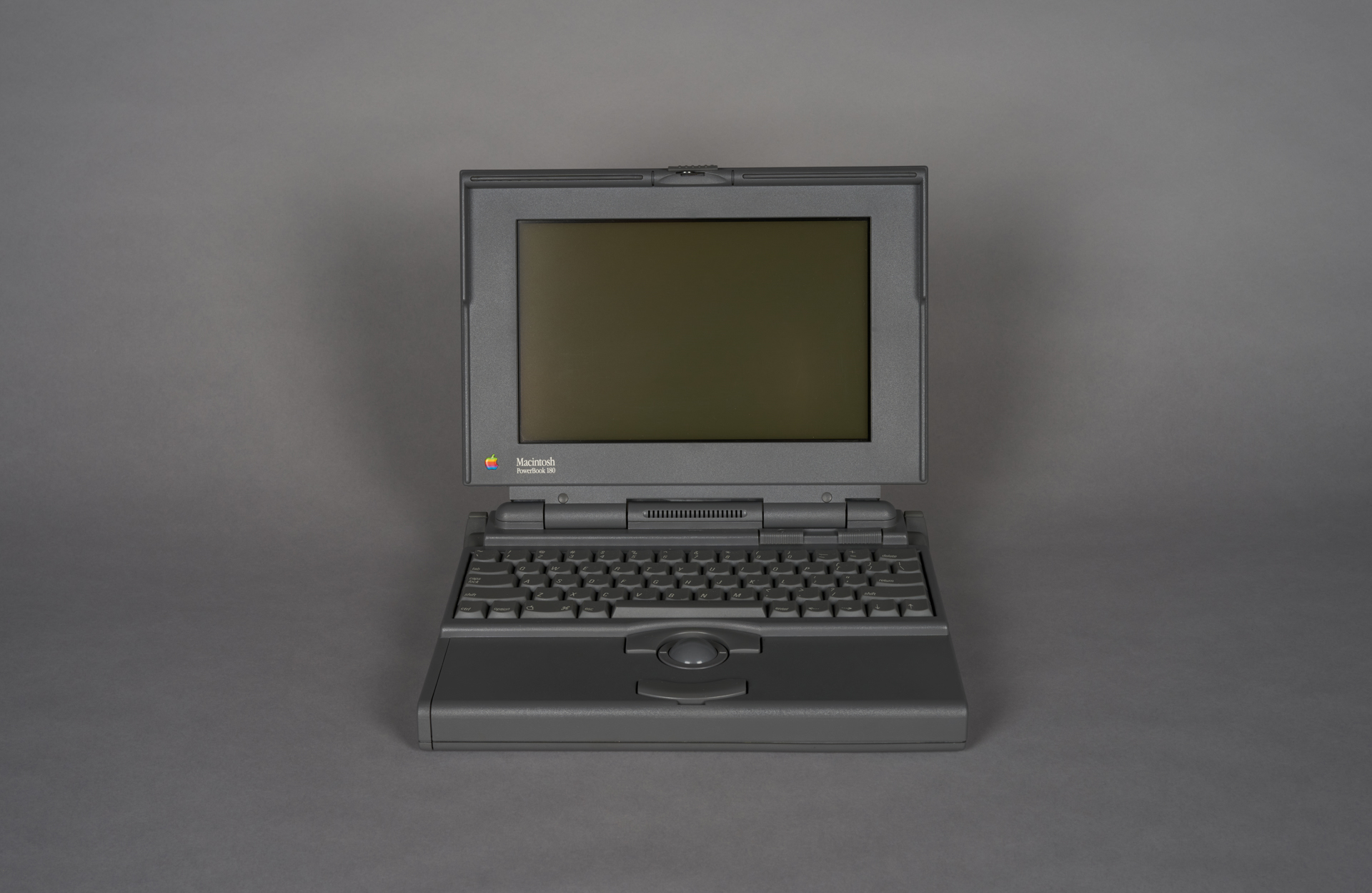
PowerBook 180 laptop computer
Apple Computer, Inc., Brunner, Robert, / 1992Creator
Apple Computer, Inc., Brunner, Robert
Time and place of creation
Time:
1992
The PowerBook 180 laptop is a portable computer made by Apple and part of the PowerBook family of almost thirty different models. Its production launched in 1992. The PowerBook series is the development line of the Macintosh series, as part of which the Macintosh Portable was introduced to the market in 1989. The task of implementing the design development of Apple’s laptops and managing the team was assigned to 3 managers: John Medica (engineering), and Randy Battat and Neil Selvin (marketing).
The PowerBook 180 has a relatively high processing power provided by the Motorola 68030 CPU. It features a power saving function that was already introduced in the 160 model and which allowed the computer to operate at a lower CPU rate. The device has a 2.5-inch, 80 MB hard disk drive as standard, and removeable media is provided in the form of a 1.44 MB, 3.5-inch floppy disks. Operating memory ranges between 4 and 14 MB. The laptop uses an active-matrix, liquid-crystal display (LCD), with a diagonal of 9.5 inches, capable of displaying a four-bit greyscale.
The PowerBook series departs from the Apple products’ Snow White design language, which was established by Hartmut Esslinger and prevailed in 1984-1990. The new design concept was the work of Robert Brunner’s team, which replaced the light colours with graphite grey. Not much attention was paid to the appearance of laptops in the 1980s, and they were simple in form, block-like, and heavy. The PowerBook series of computers, intended to compete with the products of companies such as Toshiba and Compaq, broke out of those standards and offered customers a device installed in a small, compact housing with a clamshell design. The solution was adopted from the first ever laptop computer – the Grid Compass, which was designed by Bill Moggridge in 1982. The edges of computers in the PowerBook range were rounded in order to improve comfort in use. Consistent with the principles of ergonomics the keyboard was set towards the back, leaving room for the user’s wrists on either side of the device. The function of the mouse was fulfilled by a trackball placed centrally below the keyboard line (in the Macintosh Portable model it was located on the right), which allowed it to be operated easily by both the left- and right-handed. The trackball is a sphere built into the computer housing, and its rotary movement is translated into the position of the cursor on the screen thanks to an array of sensors. The technology was developed and patented by Ralph Benjamin in 1946. It was a part of the Royal Navy’s Comprehensive Control System, used to coordinate movements of the fleet and engage enemy ships or aircraft.
Solutions adopted in the PowerBook series set the standard for the design of modern laptop computers.
Authors: Marek Więcek, Filip Wróblewski
PowerBook 180 laptop computer
Apple Computer, Inc., Brunner, Robert, / 1992Creator
Apple Computer, Inc., Brunner, Robert
Time and place of creation
Time:
1992











